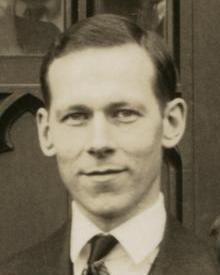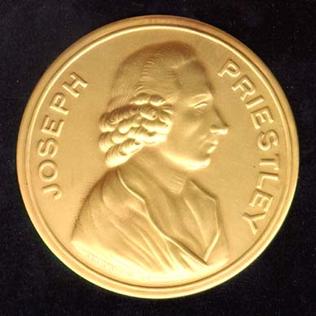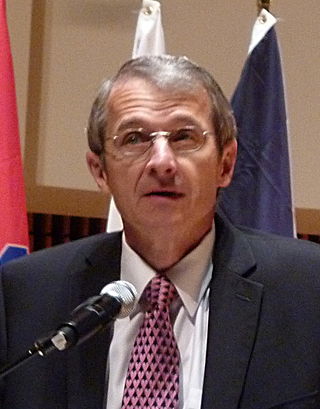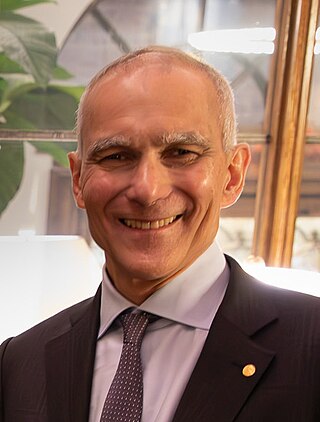Related Research Articles

Robert Sanderson Mulliken was an American physical chemist, primarily responsible for the early development of molecular orbital theory, i.e. the elaboration of the molecular orbital method of computing the structure of molecules. Mulliken received the Nobel Prize in Chemistry in 1966 and the Priestley Medal in 1983.

Har Gobind Khorana was an Indian-American biochemist. While on the faculty of the University of Wisconsin–Madison, he shared the 1968 Nobel Prize for Physiology or Medicine with Marshall W. Nirenberg and Robert W. Holley for research that showed the order of nucleotides in nucleic acids, which carry the genetic code of the cell and control the cell's synthesis of proteins. Khorana and Nirenberg were also awarded the Louisa Gross Horwitz Prize from Columbia University in the same year.

Robert William Holley was an American biochemist. He shared the Nobel Prize in Physiology or Medicine in 1968 for describing the structure of alanine transfer RNA, linking DNA and protein synthesis.

The Priestley Medal is the highest honor conferred by the American Chemical Society (ACS) and is awarded for distinguished service in the field of chemistry. Established in 1922, the award is named after Joseph Priestley, one of the discoverers of oxygen, who immigrated to the United States of America in 1794. The ACS formed in 1876, spearheaded by a group of chemists who had met two years previously in Priestley's home.

Richard Royce Schrock is an American chemist and Nobel laureate recognized for his contributions to the olefin metathesis reaction used in organic chemistry.
The Louisa Gross Horwitz Prize for Biology or Biochemistry is an annual prize awarded by Columbia University to a researcher or group of researchers who have made an outstanding contribution in basic research in the fields of biology or biochemistry.

The MIT Department of Physics has over 120 faculty members, is often cited as the largest physics department in the United States, and hosts top-ranked programs. It offers the SB, SM, PhD, and ScD degrees. Fourteen alumni of the department and nine current or former faculty members have won the Nobel Prize in Physics.The Department of Physics was born when MIT founder William Barton Rogers proposed in 1865 to bring their Mens et Manus philosophy to life by creating a new laboratory of physics and mechanics in another department’s back room.
The MIT Department of Biology is a center for research and teaching in the life sciences. Many members of the faculty hold joint appointments with other departments at MIT and with outside institutions.

Ronald T. Raines is an American chemical biologist. He is the Roger and Georges Firmenich Professor of Natural Products Chemistry at the Massachusetts Institute of Technology. He is known for using ideas and methods of physical organic chemistry to solve important problems in biology.

The Ernest Orlando Lawrence Award was established in 1959 in honor of a scientist who helped elevate American physics to the status of world leader in the field.

Louis Eugene Brus is an American chemist, and currently the Samuel Latham Mitchell Professor of Chemistry at Columbia University. He is the co-discoverer of the colloidal semi-conductor nanocrystals known as quantum dots. In 2023, he was awarded the Nobel Prize in Chemistry.
Laura Lee Kiessling is an American chemist and the Novartis Professor of Chemistry at the Massachusetts Institute of Technology. Kiessling's research focuses on elucidating and exploiting interactions on the cell surface, especially those mediated by proteins binding to carbohydrates. Multivalent protein-carbohydrate interactions play roles in cell-cell recognition and signal transduction. Understanding and manipulating these interactions provides tools to study biological processes and design therapeutic treatments. Kiessling's interdisciplinary research combines organic synthesis, polymer chemistry, structural biology, and molecular and cell biology.
The Tetrahedron Prize for Creativity in Organic Chemistry or Bioorganic and Medicinal Chemistry is awarded annually by Elsevier, the publisher of Tetrahedron Publications. It was established in 1980 and named in honour of the founding co-chairmen of these publications, Professor Sir Robert Robinson and Professor Robert Burns Woodward. The prize consists of a gold medal, a certificate, and a monetary award of US $15,000.
Cherie R. Kagan is the Stephen J. Angello Professor of Electrical and Systems Engineering, Professor of Materials Science and Engineering, and Professor of Chemistry at the University of Pennsylvania. Kagan is an Associate Editor of ACS Nano and serves on the editorial boards of Nano Letters and NanoToday.
Klavs Flemming Jensen is a chemical engineer who is currently the Warren K. Lewis Professor at the Massachusetts Institute of Technology (MIT).

Moungi Bawendi is an American–Tunisian–French chemist. He is currently the Lester Wolfe Professor at the Massachusetts Institute of Technology. Bawendi is known for his advances in the chemical production of high-quality quantum dots. For this work, he was awarded the Nobel Prize in Chemistry in 2023.
The Centenary Prize is an award granted annually by the United Kingdom-based Royal Society of Chemistry (RSC) to up to three "outstanding chemists, who are also exceptional communicators, from overseas".
Karl Frederick Freed is an American theoretical chemist recognized for his research in polymer physics. Freed has spent his academic career in the department of chemistry and the James Frank Institute at the University of Chicago, where he is the Henry G. Gale Distinguished Service Professor emeritus. He is a member of the American Academy of Arts and Sciences, a Fellow of the American Physical Society, and was awarded the Polymer Physics Prize of the American Physical Society in 2014 and the Award in Pure Chemistry by the American Chemical Society in 1976.
Christopher Bruce Murray is the Richard Perry University Professor of Chemistry and Materials Science and Engineering at the University of Pennsylvania. He is a member of the National Academy of Engineering and a Fellow of the Materials Research Society. He was a Clarivate Citation Laureate in 2020. He is known for his contributions to quantum dots and other nanoscale materials.
References
- ↑ "Professors Laura L. Kiessling and Ronald T. Raines to Join the Department | MIT Department of Chemistry". chemistry.mit.edu. Archived from the original on 2016-12-12.
- ↑ "Professors Laura L. Kiessling and Ronald T. Raines to Join the Department | MIT Department of Chemistry". chemistry.mit.edu. Archived from the original on 2016-12-12.